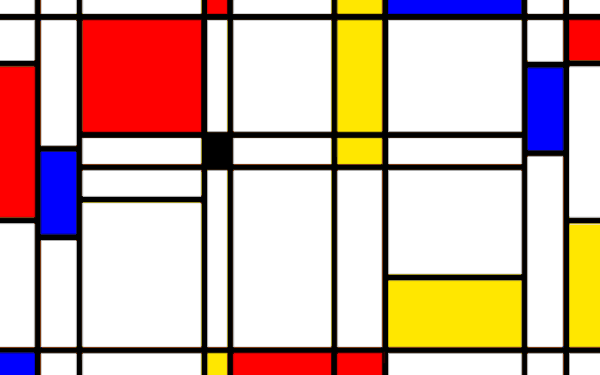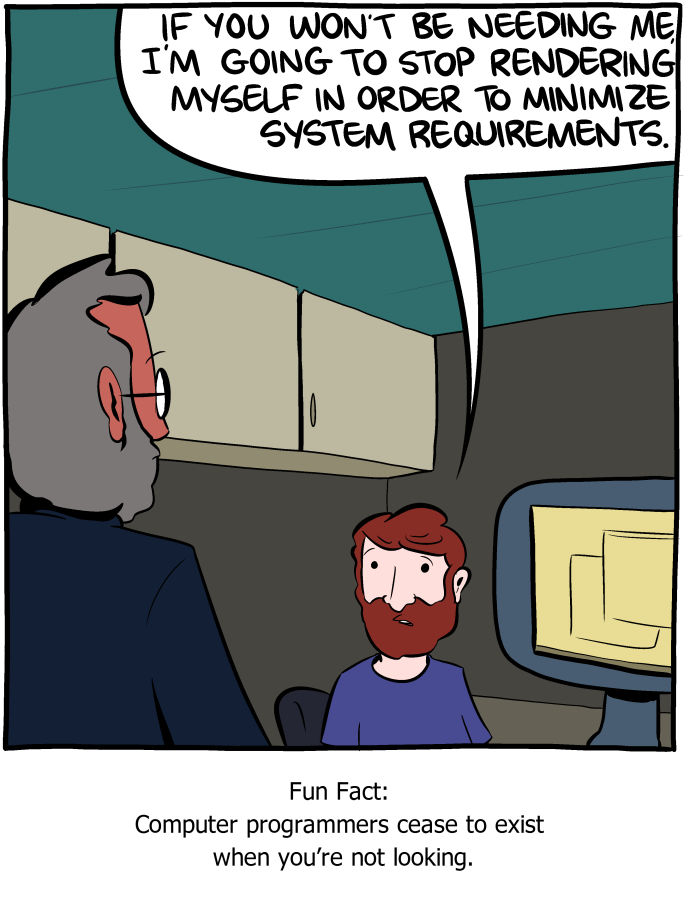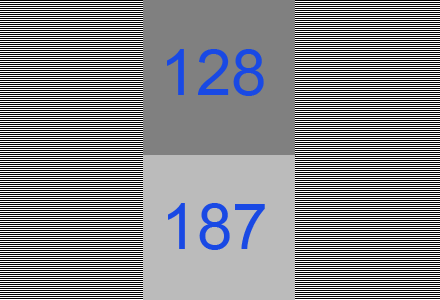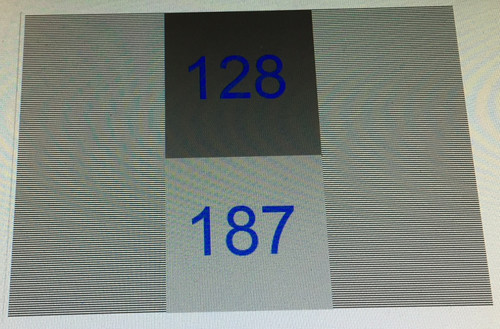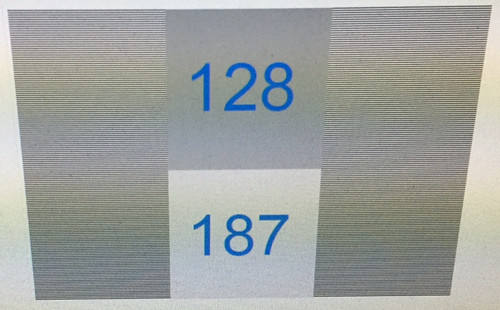This guest blog post is by Shuai Shao, a Masters student at UPenn under Patrick Cozzi. After hearing the announcement at SIGGRAPH, I was asking around for someone to write a “basics of WebGL 2” article and Patrick got Shuai involved. If you’re reading this any time after October 2016, see his Github repo for the latest version of this article, with any corrections folded in since then (we encourage you to contribute to it).
WebGL 2 is coming! Google Chrome just announced at SIGGRAPH 2016 that 100% of the WebGL 2 conformance suite is passing (on the first configurations).
If I have an engine that works well in WebGL 1, how do I move to WebGL 2? Things to consider:
- What has to be changed?
- What can be done in a better way?
- What new features and functionalities can I add to my engine?
In this article we are focused on the first question. We discuss the main promoted features, which are supported by extensions in WebGL 1 that are part of the core of WebGL 2 and thus cannot be accessed in the old manner, along with some other compatibility issues.
You can find answers to the other two questions in our next article, which focuses on introducing new features.
In the future you may want some complete working sample code for reference, instead of just code snippets. WebGL 2 Samples pack is a resource you’ll find useful.
That’s enough for an intro. First of all, let’s get WebGL 2 working on your machine.
How do I start using WebGL 2?
Get a WebGL 2 Implementation (Browser)
You may have seen this before, let’s just hit the main points:
- Just do it: Getting a WebGL Implementation
- Check if your current browser supports it; see the WebGL 2 tab of the WebGL Report
Get a WebGL 2 Context
Programmers always try to support as many browsers as possible. So do I. On top the WebGL 1 version of getContext, we will first try to access WebGL 2. If this fails, then drop back to WebGL 1. Here’s an example dervived from the Cesium WebGL engine:
var defaultToWebgl2 = false;
var webgl2Supported = (typeof WebGL2RenderingContext !== 'undefined');
var webgl2 = false;
var gl;
if (defaultToWebgl2 && webgl2Supported) {
gl = canvas.getContext('webgl2', webglOptions);
if (gl) {
webgl2 = true;
}
}
if (!gl) {
gl = canvas.getContext('webgl', webglOptions);
}
if (!gl) {
throw new Error('The browser supports WebGL, but initialization failed.');
}
Promoted Features
Some of the new WebGL 2 features are already available in WebGL 1 as extensions. However, these features will be part of the core spec in WebGL 2, which means support is guaranteed. In this first blog entry we are going to focus on these promoted features, together with potential compatibility issues they may cause.
First let’s find if there’s a way to change fewest existing WebGL 1 code using the extension to make it work correctly with a WebGL 2 context.
We may find that in some cases (instancing and VAO), it’s only the function we are calling that changes from the extension version to core version, while the parameters and pipeline don’t change. We used to call fooEXT, now we simply switch to foo.
Thanks to Javascript’s neat support of function objects, one solution is that we can create a function handler at startup, assigned with either the extension version from WebGL 1 or the core version from WebGL 2. Within the rest of the code we call this function handler.
if (!webgl2) {
vaoExt = gl.getExtension("OES_vertex_array_object");
//...
gl.createVertexArray = vaoExt.createVertexArrayOES;
//...
}
Yet this method can fail when changes are made in the shader (e.g., MRT). We still need to take a close look at each of these promoted features. So now let’s take a look at how the code changes for each of them.
Multiple Render Targets
MRT is a commonly used extension for deferred rendering, OIT, single-pass picking, etc.
For MRT we used the WEBGL_draw_buffers extension as a work-around to write g-buffers in a single pass. Though it is widely supported (currently 57%+ browsers, according to WebGL stats), the extension-style code isn’t as clean as WebGL 2:
var ext = gl.getExtension('WEBGL_draw_buffers');
if (!ext) {
// ...
}
We then bind multiple textures, tx[] in the example below, to different framebuffer color attachments.
var fb = gl.createFramebuffer();
gl.bindFramebuffer(gl.FRAMEBUFFER, fb);
gl.framebufferTexture2D(gl.FRAMEBUFFER, ext.COLOR_ATTACHMENT0_WEBGL, gl.TEXTURE_2D, tx[0], 0);
gl.framebufferTexture2D(gl.FRAMEBUFFER, ext.COLOR_ATTACHMENT1_WEBGL, gl.TEXTURE_2D, tx[1], 0);
gl.framebufferTexture2D(gl.FRAMEBUFFER, ext.COLOR_ATTACHMENT2_WEBGL, gl.TEXTURE_2D, tx[2], 0);
gl.framebufferTexture2D(gl.FRAMEBUFFER, ext.COLOR_ATTACHMENT3_WEBGL, gl.TEXTURE_2D, tx[3], 0);
Next we map the color attachments to draw buffer slots that the fragment shader will write to using gl_FragData.
ext.drawBuffersWEBGL([
ext.COLOR_ATTACHMENT0_WEBGL, // gl_FragData[0]
ext.COLOR_ATTACHMENT1_WEBGL, // gl_FragData[1]
ext.COLOR_ATTACHMENT2_WEBGL, // gl_FragData[2]
ext.COLOR_ATTACHMENT3_WEBGL // gl_FragData[3]
]);
Also, an extra flag is needed in the shader:
#extension GL_EXT_draw_buffers : require
precision highp float;
// ...
void main() {
gl_FragData[0] = vec4( v_position.xyz, 1.0 );
gl_FragData[1] = vec4( v_normal.xyz, 1.0 );
gl_FragData[2] = texture2D( u_colmap, v_uv );
gl_FragData[3] = texture2D( u_normap, v_uv );
}
For MRT our code becomes neat and clean in WebGL 2.
gl.framebufferTexture2D(gl.DRAW_FRAMEBUFFER, gl.COLOR_ATTACHMENT0, gl.TEXTURE_2D, tex[0], 0);
gl.framebufferTexture2D(gl.DRAW_FRAMEBUFFER, gl.COLOR_ATTACHMENT1, gl.TEXTURE_2D, tex[1], 0);
gl.framebufferTexture2D(gl.DRAW_FRAMEBUFFER, gl.COLOR_ATTACHMENT2, gl.TEXTURE_2D, tex[2], 0);
defines an array of buffers into which outputs will be written. Draw by:
gl.drawBuffers( [gl.COLOR_ATTACHMENT0, gl.COLOR_ATTACHMENT1, gl.COLOR_ATTACHMENT2] );
Instead of mapping color attachments to the draw buffer, we directly use multiple out variables in the fragment shader. This code actually benefits from the new GLSL 3.0 ES, which we will discuss later in another blog post. However, using out itself is straightforward.
#version 300 es
precision highp float;
layout(location = 0) out vec4 gbuf_position;
layout(location = 1) out vec4 gbuf_normal;
layout(location = 2) out vec4 gbuf_colmap;
layout(location = 3) out vec4 gbuf_normap;
//...
void main()
{
gbuf_position = vec4( v_position.xyz, 1.0 );
gbuf_normal = vec4( v_normal.xyz, 1.0 );
gbuf_colmap = texture2D( u_colmap, v_uv );
gbuf_normap = texture2D( u_normap, v_uv );
}
Additionally, since Texture 2D Array is now available, we can choose to render to different layers of an array of texture 2d’s instead of separate 2d textures.
gl.framebufferTextureLayer(gl.DRAW_FRAMEBUFFER, gl.COLOR_ATTACHMENT0, texture, 0, 0);
gl.framebufferTextureLayer(gl.DRAW_FRAMEBUFFER, gl.COLOR_ATTACHMENT1, texture, 0, 1);
gl.framebufferTextureLayer(gl.DRAW_FRAMEBUFFER, gl.COLOR_ATTACHMENT2, texture, 0, 2);
Instancing
Instancing is a great performance booster for certain types of geometry, especially objects with many instances but without many vertices. Good examples are grass and fur. Instancing avoids the overhead of an individual API call per object, while minimizing memory costs by avoiding storing geometric data for each separate instance.
Instancing is exposed through the ANGLE_instanced_arrays extension in WebGL 1 (92%+ support). Now with WebGL 2 we can simply use drawArraysInstanced or drawArraysInstanced for the draw calls.
gl.drawArraysInstanced(gl.TRIANGLES, 0, 3, 2);
There is a new built-in variable (GLSL 3.0 ES) in the vertex shader called gl_InstanceID that can help with the draw instance call. For example, we can use this to assign each instance with a separate color.
// Vertex Shader
flat out int in instance
// ...
void main() {
instance = gl_InstanceID;
}
// Fragment Shader
uniform Material {
vec4 diffuse[NUM_MATERIALS];
} material;
flat in int instance; // `flat` is a must for a int varying, plus we don't want the instance id to be interpolated
// ...
void main() {
color = material.diffuse[instance % NUM_MATERIALS];
}
Vertex Array Object
VAO is very useful in terms of engine design. It allows us to store vertex array states for a set of buffers in a single, easy to manage object. It is exposed through the OES_vertex_array_object extension in WebGL 1 (89%+).
| WebGL 1 with extension | WebGL 2 |
|---|---|
createVertexArrayOES |
createVertexArray |
deleteVertexArrayOES |
deleteVertexArray |
isVertexArrayOES |
isVertexArray |
bindVertexArrayOES |
bindVertexArray |
An example:
var vertexArray = gl.createVertexArray();
gl.bindVertexArray(vertexArray);
// set vertex array states
var vertexPosLocation = 0; // set with GLSL layout qualifier
gl.enableVertexAttribArray(vertexPosLocation);
gl.bindBuffer(gl.ARRAY_BUFFER, vertexPosBuffer);
gl.vertexAttribPointer(vertexPosLocation, 2, gl.FLOAT, false, 0, 0);
gl.bindBuffer(gl.ARRAY_BUFFER, null);
// ...
gl.bindVertexArray(null);
// ...
// render
gl.bindVertexArray(vertexArray);
gl.drawArrays(gl.TRIANGLES, 0, 6);
Shader Texture LOD
The Shader Texture LOD Bias control makes mipmap level control simpler for glossy environment effects in physically based rendering. This functionality is exposed through the EXT_shader_texture_lod extension in WebGL 1 (71%+).
vec4 texture2DLodEXT(sampler2D sampler, vec2 coord, float lod)
Now as part of core, the lodBias can be passed as an optional parameter to texture
gvec4 texture (gsampler2D sampler, vec2 P [, float bias] )
Fragment Depth
The fragment shader can explicitly set the depth value for the current fragment. This operation can be expensive because it can cause the early-z optimization to be disabled. However, it is needed in cases where the z-depth is modified on the fly.
This functionality is exposed through the EXT_frag_depth extension in WebGL 1 (66%+).
out float gl_FragDepth;
More details can be found in the GLSL 3.0 ES Spec.
Other compatibility issues
Look here for more information: WebGL 2 Spec Ch4.1
Credits
- Brandon Jones http://blog.tojicode.com/2013/09/whats-coming-in-webgl-20.html
- Hongwei Li https://zhuanlan.zhihu.com/p/19957067?refer=webgl
- WebGL 2 Spec https://www.khronos.org/registry/webgl/specs/latest/2.0/
- OpenGL ES 3 Spec https://www.khronos.org/registry/gles/specs/3.0/es_spec_3.0.0.pdf
- OpenGL ES 3 Programming Guide http://1.droppdf.com/files/v4voM/addison-wesley-opengl-es-3-0-programming-guide-2nd-2014.pdf
- http://gamedev.stackexchange.com/questions/9668/what-are-3d-textures
- http://www.gamedev.net/topic/655969-speed-gluniform-vs-uniform-buffer-objects/
- Sijie Tian https://hacks.mozilla.org/2014/01/webgl-deferred-shading/
- Dong Dong https://www.zhihu.com/question/49327688/answer/115691345?from=profile_answer_card
- Cesium https://github.com/AnalyticalGraphicsInc/cesium
- WebGL Stats http://webglstats.com/
- WebGL 2 for Siggraph Asia 2015 https://docs.google.com/presentation/d/1Orx0GB0cQcYhHkYsaEcoo5js3c5-pv7ahPniIRIzzfg/edit#slide=id.gd1fc5cab2_0_8
- https://software.intel.com/en-us/articles/early-z-rejection-sample


